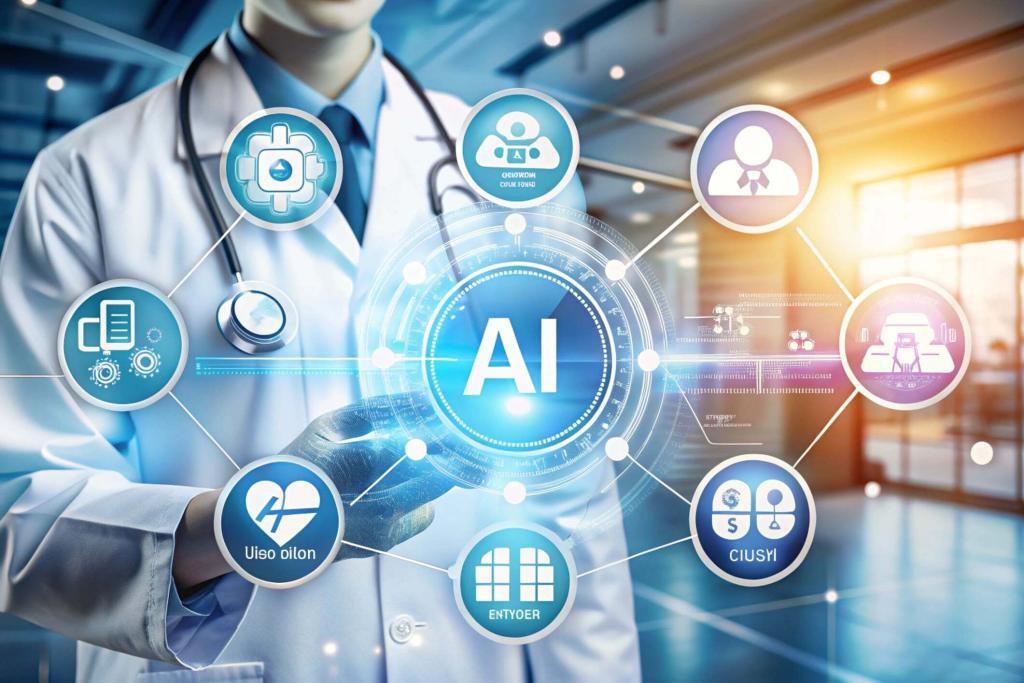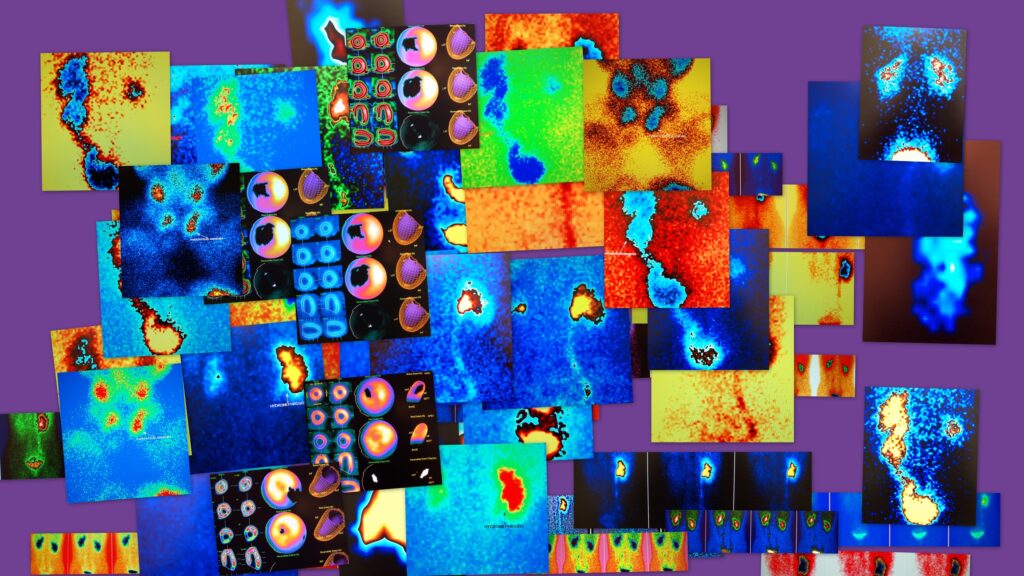Summary: Diagnostic imaging services are a crucial part of modern healthcare, providing essential insights for accurate diagnosis and effective treatment. However, many patients experience anxiety, confusion, or frustration when navigating the complexities of imaging appointments, procedures, and results. Digital innovation is offering new solutions, with chat agents emerging as a valuable tool for improving patient interaction. These AI-driven assistants not only streamline communication but also enhance understanding, reduce wait times, and deliver a more personalised experience. This article explores how chat agents are reshaping patient engagement in diagnostic imaging, discusses real-world examples, and highlights future opportunities and challenges.
Keywords: Chat agents, Diagnostic imaging, Patient engagement, AI in healthcare, Digital transformation, Patient communication.
The Changing Landscape of Diagnostic Imaging
Healthcare is undergoing significant change, driven by digital technology and a demand for patient-centred care. Diagnostic imaging, which includes services such as X-rays, MRI, CT scans, and ultrasound, is no exception. The increasing volume of scans, combined with a diverse patient population, often leads to communication barriers, delays, and misunderstandings. Traditional communication channels, such as phone calls or leaflets, can be insufficient for providing the timely, clear information patients need.
Patients seeking imaging services frequently have questions about appointment preparation, scan safety, and the meaning of their results. Reception teams and clinicians are often overwhelmed, leading to missed calls or rushed conversations. This can increase patient anxiety, reduce satisfaction, and even impact clinical outcomes if information is misunderstood.
Chat agents are now entering this environment, offering a fresh approach to communication and service delivery. Powered by advances in natural language processing and machine learning, these virtual assistants are available 24/7, can answer a wide range of queries, and adapt to each patient’s needs. Their role in diagnostic imaging is proving to be a turning point in patient experience.
What Are Chat Agents and How Do They Work?
A chat agent, sometimes called a chatbot or virtual assistant, is a software application designed to simulate human conversation. In the context of diagnostic imaging services, chat agents are typically accessible through a hospital’s website, patient portal, or even messaging platforms such as WhatsApp or SMS.
Unlike basic automated phone systems, modern chat agents understand natural language and respond intelligently. They can guide patients through the process of scheduling appointments, preparing for scans, answering common questions, and providing updates on wait times or results availability. Advanced versions integrate with hospital systems, enabling secure access to individual appointment details and tailored information.
The underlying technology relies on a combination of predefined scripts, artificial intelligence, and sometimes even human support for more complex queries. This hybrid model ensures patients receive accurate and empathetic responses while freeing up human staff for tasks that require personal attention or medical expertise.
Improving Communication and Reducing Anxiety
Effective communication is essential in diagnostic imaging, as patients are often unfamiliar with procedures and may feel anxious about their health. Chat agents help by providing clear, consistent information at the point of need.
For example, a patient scheduled for an MRI might be unsure about what to wear, whether they can eat beforehand, or if their pacemaker will cause complications. Rather than waiting on hold or searching through leaflets, the patient can ask a chat agent and receive instant, accurate answers. The agent can also offer reassurance, explain why specific preparations are necessary, and advise on what to expect during and after the scan.
This real-time support reduces anxiety, builds trust, and can even improve attendance rates by reminding patients of appointments and preparations. Some chat agents can send automated reminders, check on patient readiness, and reschedule missed appointments, making the process more convenient and less stressful for everyone involved.
Personalisation and Accessibility
One of the most significant advantages of chat agents is their ability to personalise information. Every patient is different, and their questions or concerns may vary based on age, language, health status, or previous experiences with healthcare.
Advanced chat agents draw on patient records (with consent) to provide tailored advice. For instance, a patient with known allergies or special needs can be given specific instructions about contrast agents or access arrangements. If the chat agent detects uncertainty or distress in a patient’s messages, it can escalate the conversation to a human staff member for more sensitive handling.
Accessibility is also improved. Patients who may find telephone conversations difficult, such as those with hearing impairments or limited English, can use chat agents with text translation, speech-to-text, or even voice assistants. This inclusivity ensures more patients receive the information and support they need, regardless of background.
Streamlining Operations and Reducing Staff Workload
Diagnostic imaging departments are often under pressure to deliver timely results while managing increasing workloads. Administrative staff spend considerable time answering repetitive queries, booking appointments, and chasing up paperwork.
By handling routine enquiries, chat agents free up valuable staff time. Reception teams can focus on complex cases, direct patient care, or urgent issues. This not only reduces burnout among healthcare workers but also improves overall efficiency.
Hospitals using chat agents have reported a noticeable drop in missed appointments and duplicated bookings. Patients find it easier to reschedule or cancel, which optimises the use of equipment and reduces wasted slots. In addition, chat agents can guide patients through digital consent forms, collect feedback, and even provide post-scan instructions, further streamlining the patient journey.
Building Trust and Ensuring Data Security
Adopting chat agents in a healthcare setting does raise questions about trust, privacy, and data security. Patients must be confident that their information is handled safely and that they are receiving reliable advice.
Leading chat agent platforms used in diagnostic imaging comply with healthcare data standards such as the NHS Digital, GDPR, and other relevant regulations. Conversations are encrypted, and sensitive queries are escalated to qualified professionals. Patients are informed about the limits of the chat agent’s knowledge and reminded that it is not a substitute for clinical advice.
Transparency is key to building trust. Chat agents can introduce themselves, explain their capabilities, and direct patients to human staff when needed. Regular monitoring and updates ensure the information provided is current and clinically accurate. Many systems include a feedback loop, where patients can rate their experience and suggest improvements.
Real-World Examples and Case Studies
Across the UK and internationally, healthcare providers are embracing chat agents to enhance patient interaction in diagnostic imaging.
NHS trusts have piloted chat agents that guide patients through MRI, CT, and ultrasound appointments. Early results show improved patient satisfaction, reduced missed appointments, and more efficient workflows. In some trusts, chat agents are available in multiple languages, breaking down barriers for non-native English speakers.
Private imaging providers are also investing in chat technology, using it to provide instant support, explain billing, and answer questions about scan safety or waiting times. These initiatives have contributed to higher patient loyalty and positive reviews.
Internationally, some hospitals in the US and Europe have integrated chat agents with their electronic health record systems, enabling patients to receive tailored preparation instructions and real-time updates on test results. Feedback from patients and staff highlights the reduction in administrative burden and the improvement in communication quality.
Challenges and Future Directions
While the benefits of chat agents are clear, their adoption is not without challenges. Technology must be integrated carefully with existing hospital systems, ensuring patient data remains secure and workflows are not disrupted. Training is needed to help staff manage chat agent queries and intervene when necessary.
There is also the risk that some patients may feel uncomfortable with digital tools, particularly older individuals or those less familiar with technology. For these groups, traditional communication methods should remain available, and chat agents should offer clear signposting to human support.
The technology is advancing rapidly. Future chat agents will likely feature voice recognition, emotional analysis, and even integration with wearable devices to provide more comprehensive patient support. As artificial intelligence matures, chat agents may play an increasing role in clinical triage, signposting patients to urgent care or follow-up when appropriate.
Conclusion
Chat agents are rapidly changing the way patients interact with diagnostic imaging services. By offering instant, personalised, and accessible communication, they address long-standing issues such as patient anxiety, missed appointments, and staff workload. With robust data security and a focus on transparency, chat agents are earning the trust of patients and healthcare professionals alike.
As technology continues to evolve, chat agents will become an even more integral part of diagnostic imaging and wider healthcare delivery. The benefits are already being realised in improved patient satisfaction, streamlined operations, and better health outcomes. Those imaging providers who embrace this digital transformation are well-placed to meet the needs of modern patients and deliver the high standard of care that everyone deserves.
Disclaimer
The information provided in this article is for general informational purposes only and reflects the views of Open Medscience. While every effort has been made to ensure the accuracy and reliability of the content, it should not be interpreted as medical advice, nor should it replace consultation with qualified healthcare professionals. Readers are advised to consult their doctor or an appropriate medical specialist regarding any specific medical concerns, diagnostic imaging procedures, or use of digital health tools, including chat agents.
Any examples or case studies mentioned are illustrative and do not constitute an endorsement of particular technologies, vendors, or services. Open Medscience does not accept responsibility for any loss, injury, or damage arising from reliance on the information provided herein. Adoption of digital communication tools in healthcare should always be assessed for compliance with relevant data protection and privacy regulations.
You are here: home » diagnostic medical imaging blog »



